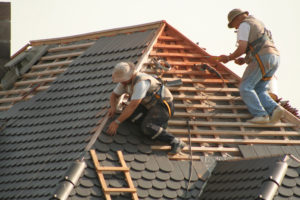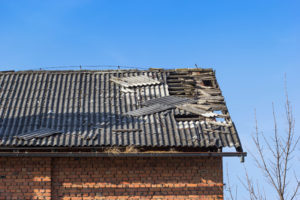House Top Experts General Roof Maintenance Strategies
Keep your roof clean
Remove debris from your roof such as leaves, branches, and any other clutter. Organic materials sitting on your roof can rot and promote moss build up which can lead to water leaks over time. If trees are close to your home you may want to consider removing overhanging branches.
Keep your gutters clean
Regular cleaning of your gutters strongly encouraged to ensure proper water drainage of water on your roof. Eaves protectors, constructed of a metal meshed grate, that overhang your gutter is a great way to minimize debris collection in your gutter making cleaning much easier and less frequent. Debris left in gutters can cause blockages or additional weight which can compromise the correct angle of your gutters for effective drainage. This is especially true for regions that experience a lot of snow and ice. Improper gutter maintenance and/or installation can result in ice build-up on your roof which can lead to leaks and potential collapse of your roof. Lastly, pay attention to your gutters draining during wet conditions. Note areas where you have drips around your roof and gutters and report these to your contractor during inspections.
Pay attention to your soffits
Soffits are located on the underside of the overhang on your roof and, in conjunction with your attic vents, are a vital part of proper venting in your home. Look for rot, damage, warping, and insect invasions in your attic that can be a sign your soffits are failing. Improper ventilation can lead to mold and damage to your roof support structure.
Have your roof inspected by a contractor
This should be done minimally once a year, twice annually is recommended for newly installed or older roofs and immediately after a severe weather. Your contractor should inspect your roof for: damage, misalignment, gaps or deterioration of your roofing material; chimney cracks; vents; fascia; all flashing for rust or cracks; caulking; sagging; loose or missing nails or fasteners; evidence of animal activity. The interior of your home should also be inspected to check for: mold or mildew; proper insulation; any light coming through your roof: condition of roofing rafters accessible; evidence of water damage or leaks; proper; attic ventilation; sagging or strain of roof structure which can be a concerns with heavy roofing materials such as clay.
Pay attention to the weather patterns in your area
If you plan to replace, or have extensive repairs on your roof, schedule during the dryer season if you can. Harsh weather conditions are the most common cause of damage to your roof. Rain and snow can greatly impact the progress of your project by causing unexpected delays and other concerns in the protection of your home.
Be cautious of DIY or hiring someone other than a licenced contractor
Improper repair or installation of your roof, by a non-licenced individual or company may, not only void your roof warranty but may also impact your home insurance claim if damage is incurred as a direct or indirect result of a repair.
Timely repair of your roof
If damage to your roof is evident or if you have a water leak (or suspect) call your roofer right away. If you delay you risk further damage which can increase cost or full roof failure.
Cover your bases
It is a great idea to consult with your roofing contractor to ensure you take all steps as a homeowner to protect your investment and prolong the life of your home. Online resources such as Wiki are also great resources to research common roofing solutions and recommended maintenance.
Looking to contact us? Find where we service below for contact info.



